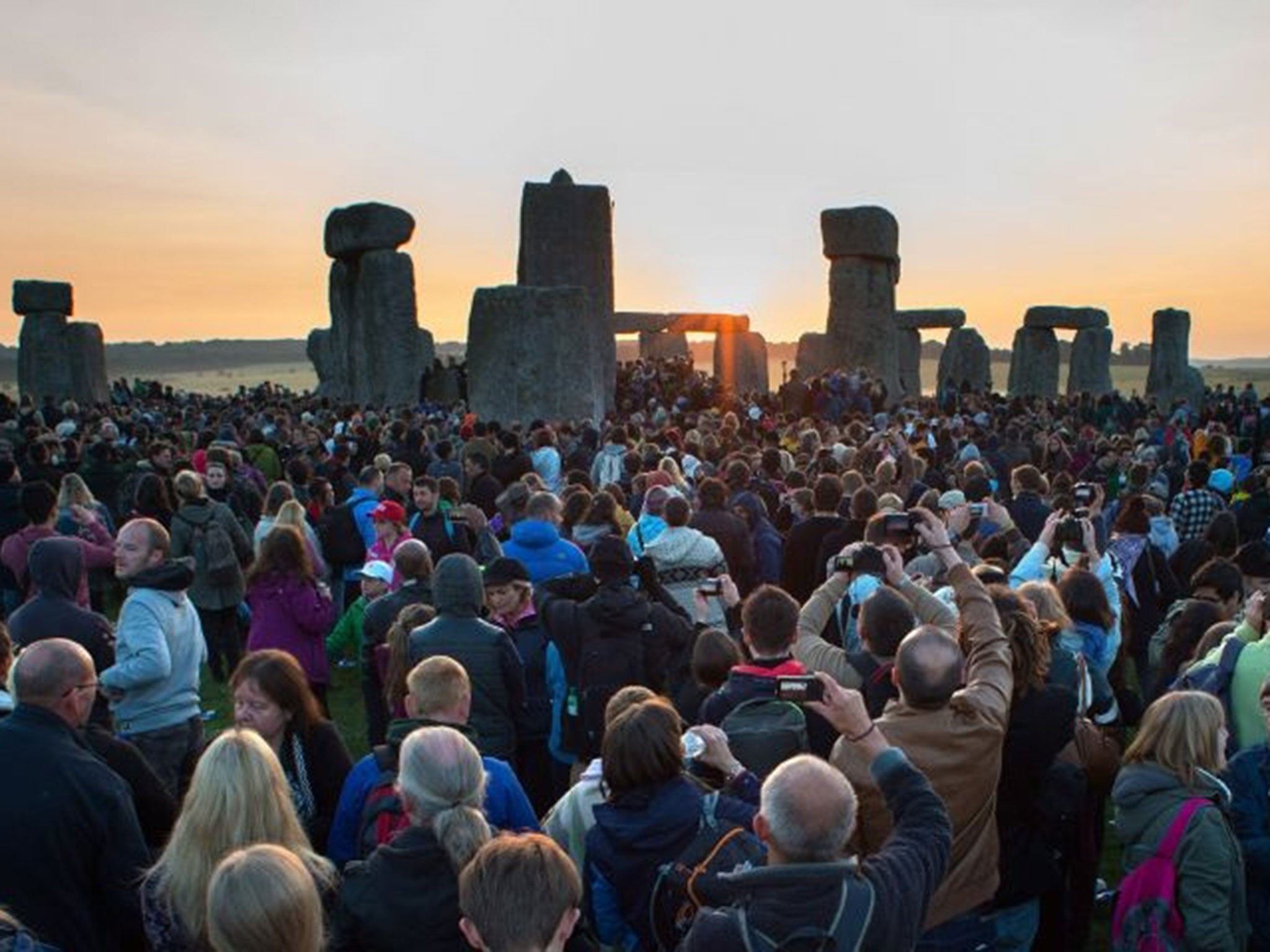Your support helps us to tell the story
From reproductive rights to climate change to Big Tech, The Independent is on the ground when the story is developing. Whether it's investigating the financials of Elon Musk's pro-Trump PAC or producing our latest documentary, 'The A Word', which shines a light on the American women fighting for reproductive rights, we know how important it is to parse out the facts from the messaging.
At such a critical moment in US history, we need reporters on the ground. Your donation allows us to keep sending journalists to speak to both sides of the story.
The Independent is trusted by Americans across the entire political spectrum. And unlike many other quality news outlets, we choose not to lock Americans out of our reporting and analysis with paywalls. We believe quality journalism should be available to everyone, paid for by those who can afford it.
Your support makes all the difference.An estimated 37,000 revellers flocked to Stonehenge to watch a stunning sunrise this morning on the longest day in the calendar year.
The Summer Solstice has a long history of drawing crowds to the popular tourist attraction on Salisbury Plain, off the A303.
It is known as one of the most important dates on the calendar for latter-day Druids, who believe the stones allow them to commune with ancient ancestors in a sacred setting.
Stonehenge was built between 3,000 BC and 1,600 BC. Its original purpose is still the topic of heated debate for ancient historians.
Wiltshire Police said that 25 people were arrested at the event, mainly for drugs-related offences.
A spokesman said: "We are pleased that the Solstice celebrations at Stonehenge and Avebury have been enjoyable events for the majority of people attending.
"The road system worked well with minimum delays and many people used the public transport as we advised people to do. Every year there are new challenges for us at Solstice but it is always a pleasure to see so many people enjoying the event."
What is the summer solstice?
‘Solstice’ literally means stopping or standing still of the sun. It is used as a name for the longest day of the year – 21 June – when the sun is at its highest point in the northern hemisphere. It is celebrated by thousands of pagans across the world, but recent celebrations at Stonehenge only started in the 20 century.
On the day of the Solstice, the central Altar stone at Stonehenge aligns with the Heel stone, the Slaughter stone and the rising sun to the north east.

Join our commenting forum
Join thought-provoking conversations, follow other Independent readers and see their replies
Comments